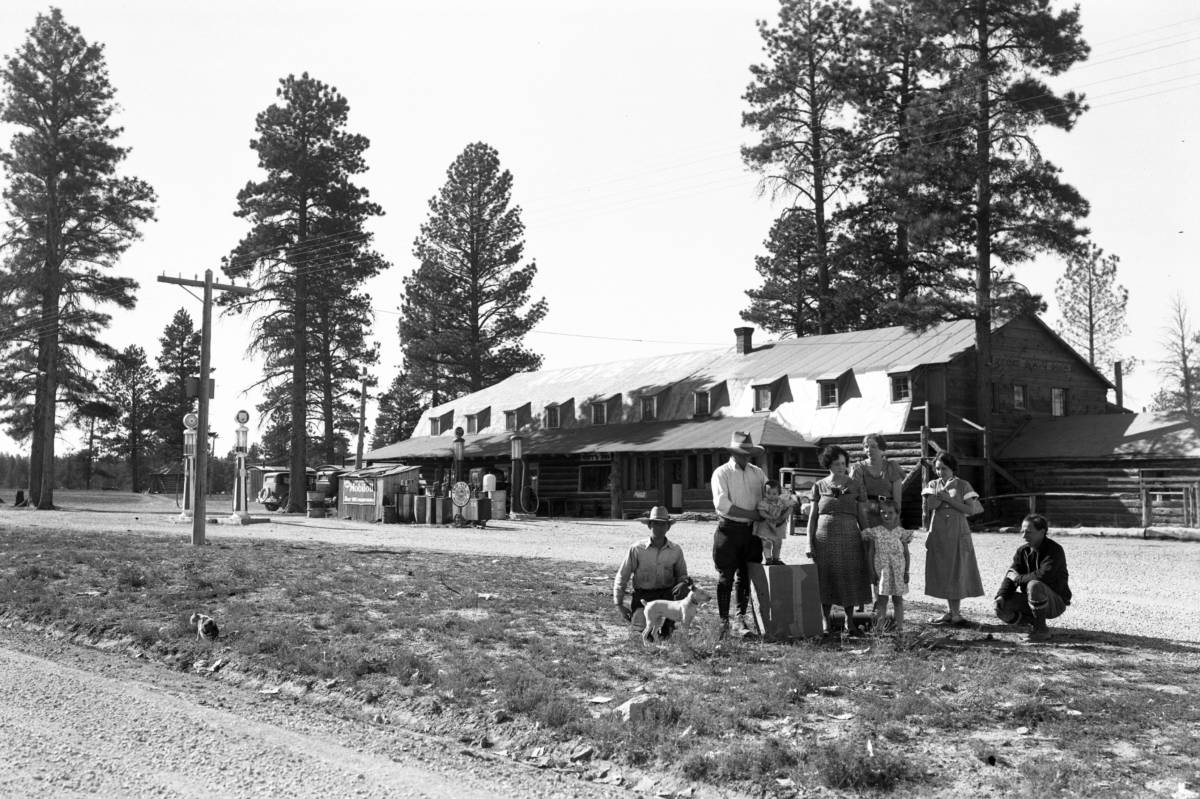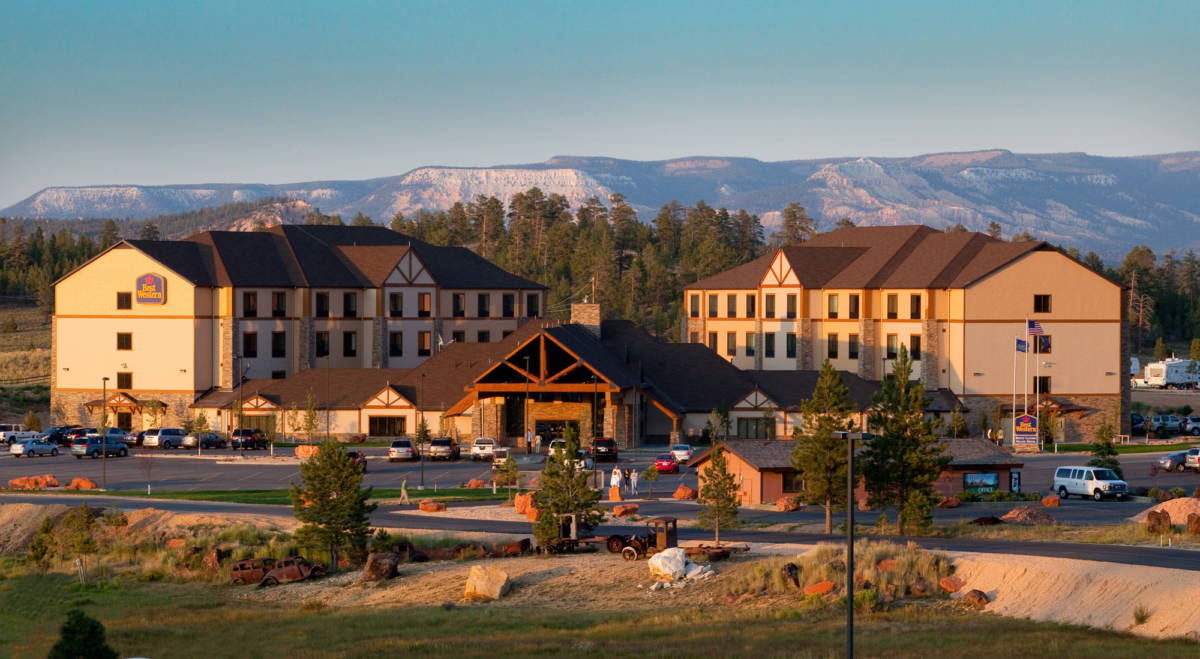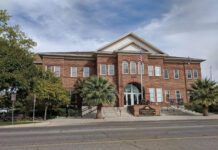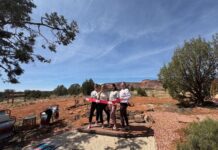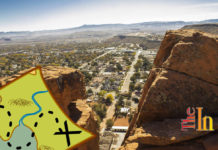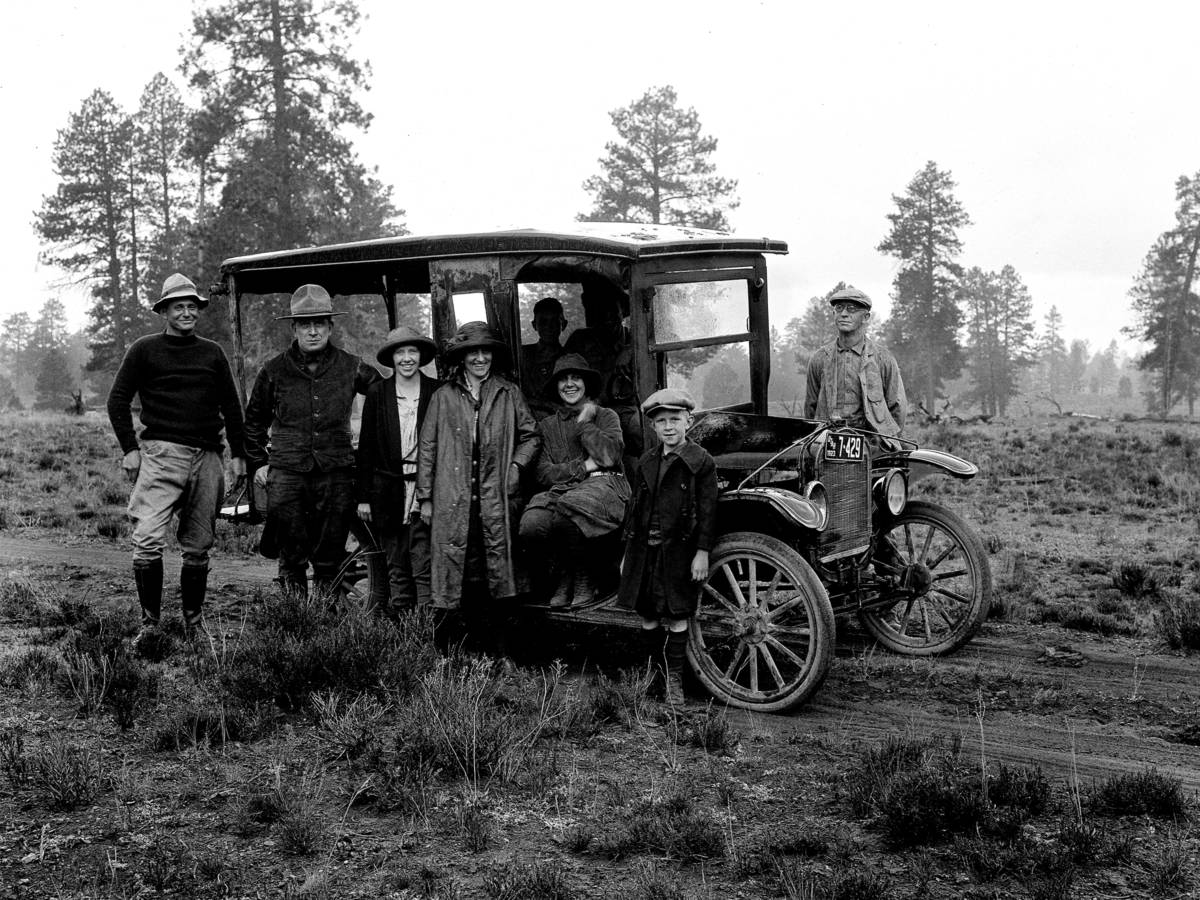
By Chelsea Oldroyd
One hundred years ago, Ruby Syrett built Bryce Canyon’s first tourist lodge. During this time, Bryce Canyon was growing in popularity, and visitors began traveling from all over to see why. The photos below feature the “then and now” of Bryce Canyon National Park. The juxtaposition of century-old and modern photos depicts small and large changes in this world-renowned park.
Bryce Canyon National Park Then and Now: Celebrating 100 Years of History
1 of 14
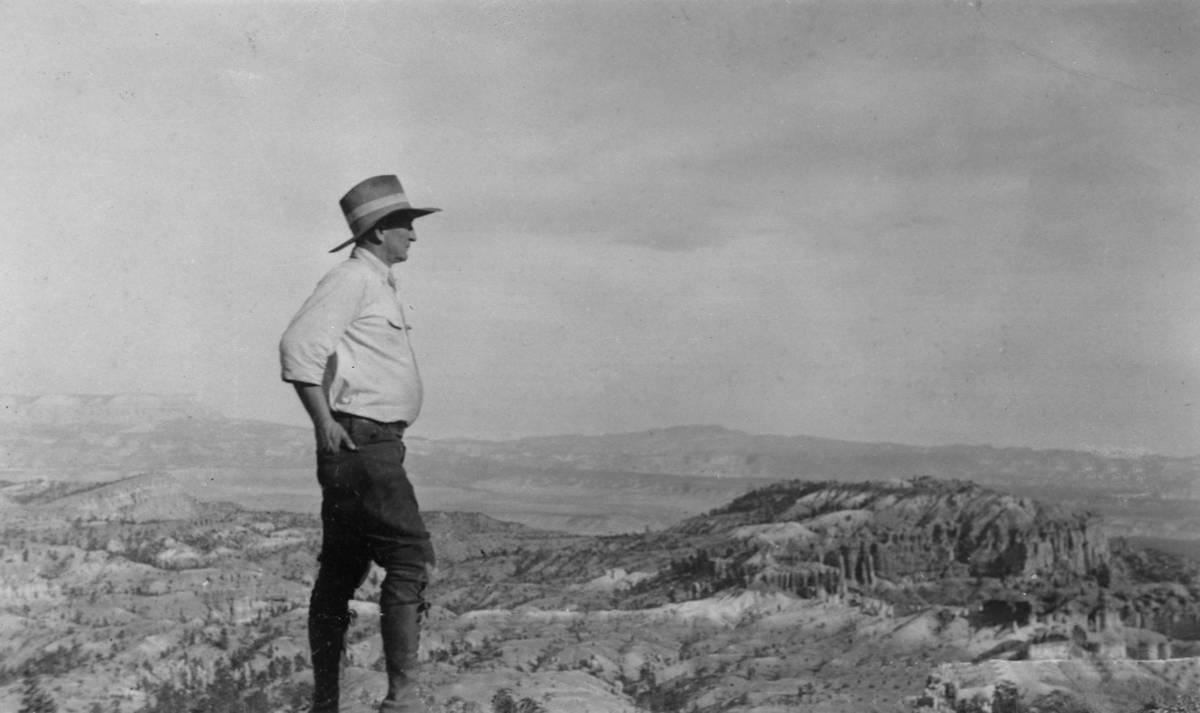
Ruby Syrett gazing over Bryce Canyon’s rim
Then: “One Sunday afternoon ... my family and I climbed into our white-topped buggy and went to see this ‘hole in the ground,’” said Ruby Syrett, one of Bryce Canyon’s first inhabitants and founder of Bryce Canyon’s first tourist lodge. “We stood speechless: the coloring, the rock formations, we had never seen anything like it. What a surprise the hole turned out to be! We thought everyone should see it, so from that time on we took our friends there, and we told everyone we met about Bryce” (Seiler, A. J. 2013. “Ruby's Inn at Bryce Canyon”). Photo: Ruby Syrett gazing over Bryce Canyon’s rim.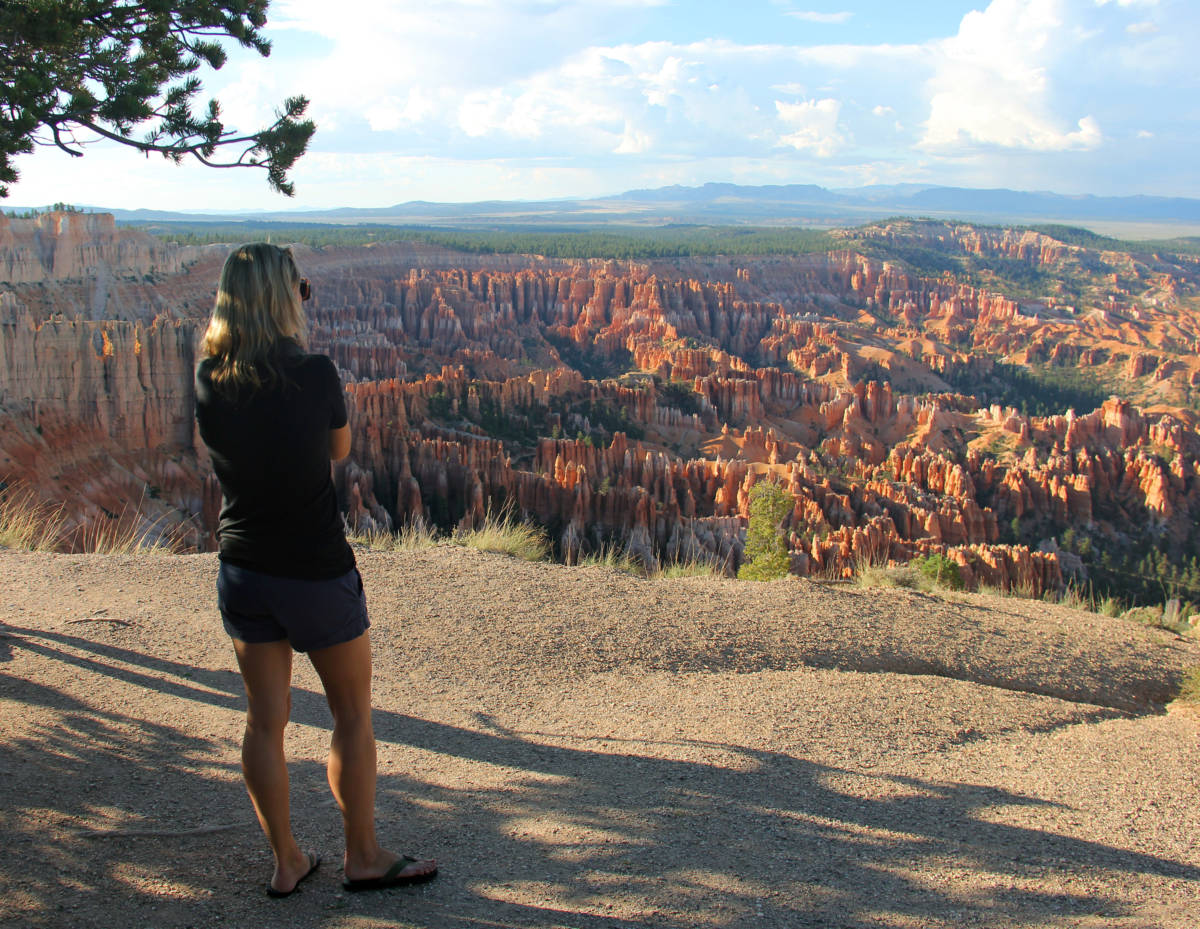
Unidentified person on Bryce Canyon's rim
Now: Today, this “hole in the ground” attracts visitors worldwide.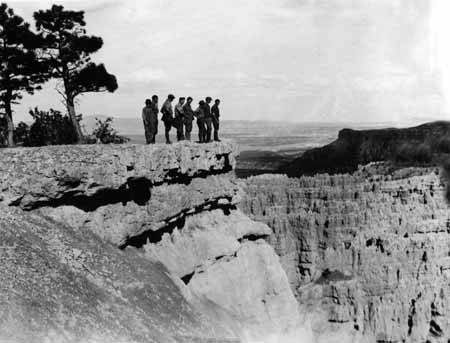
People overlooking Bryce Canyon's hoodoos
Then: “You can perhaps imagine my surprise at the indescribable beauty that greeted us, and it was sundown before I could be dragged from the canyon view,” said J.W. Humphrey, who was assigned to manage the Sevier Forest in July 1915. “You may be sure that I went back the next morning to see the canyon once more, and to plan in my mind how this attraction could be made accessible to the public” (Seiler, A. J. 2013. “Ruby's Inn at Bryce Canyon”). Humphrey was the person most responsible for making Bryce Canyon a national park. 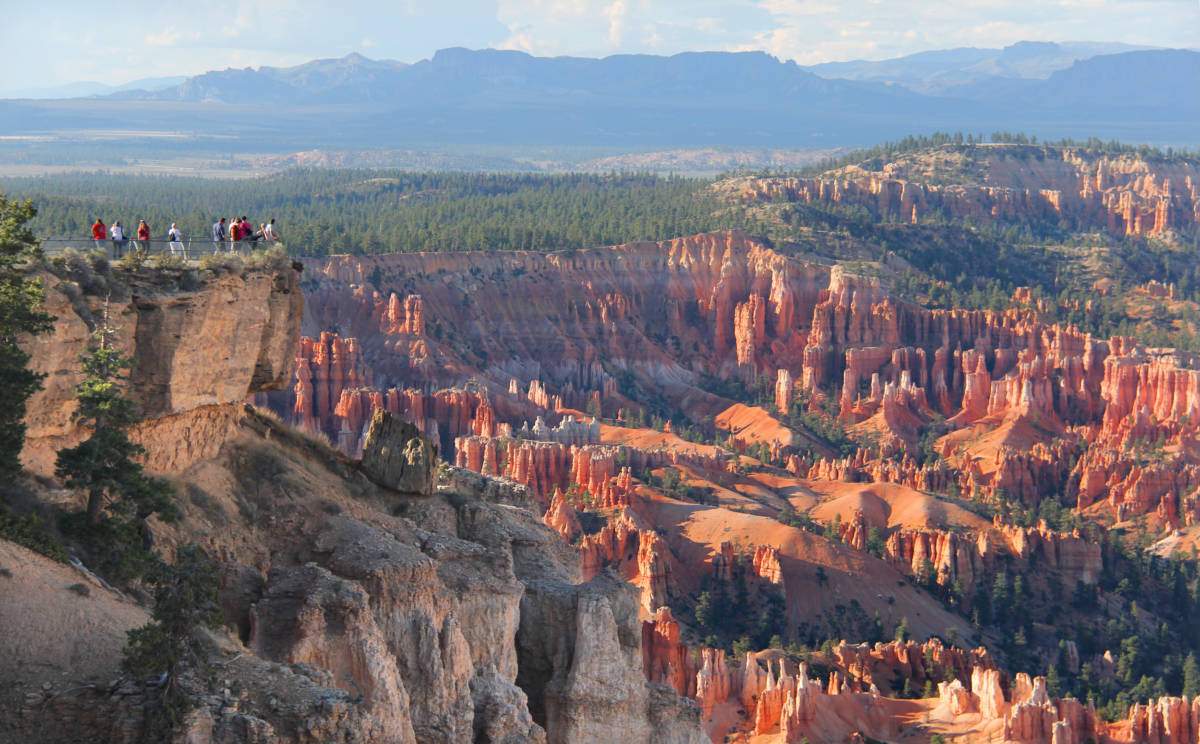
People gazing over Bryce Canyon's rim
Now: Thanks to J.W. Humphrey and others, Bryce Canyon became a park in 1928. Today, 1.75 million visitors come to Bryce Canyon every year to take in the incredible views. 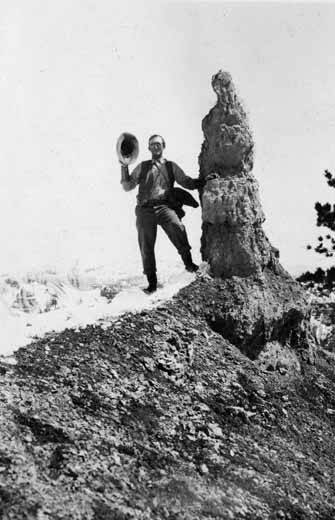
Ruby posing with a hoodoo
Then: Ruby Syrett is featured in this image during the winter months posing with one of the many Bryce Canyon hoodoos. He often went exploring along with his guests. 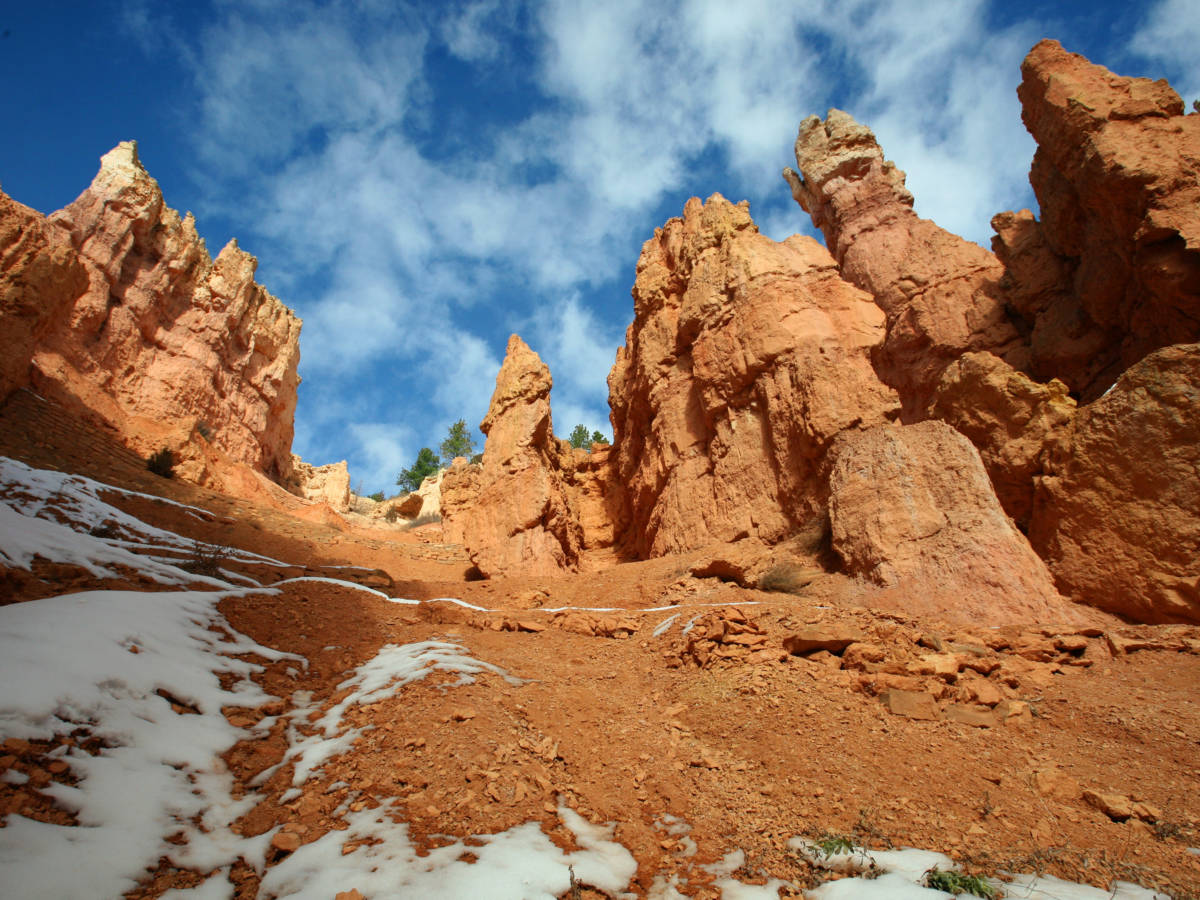
Shot of Bryce Canyon's hoodoos
Now: Along with the lively color patterns, hoodoos range from 5 to 150 feet.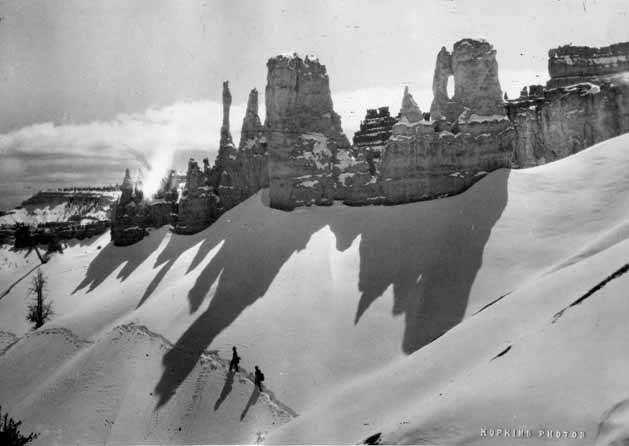
Hikers following snow trail at Bryce Canyon
Then: It took some effort to hike in and around Bryce Canyon from the untamed terrain, especially in the snow. Hikers had to make create their own paths. 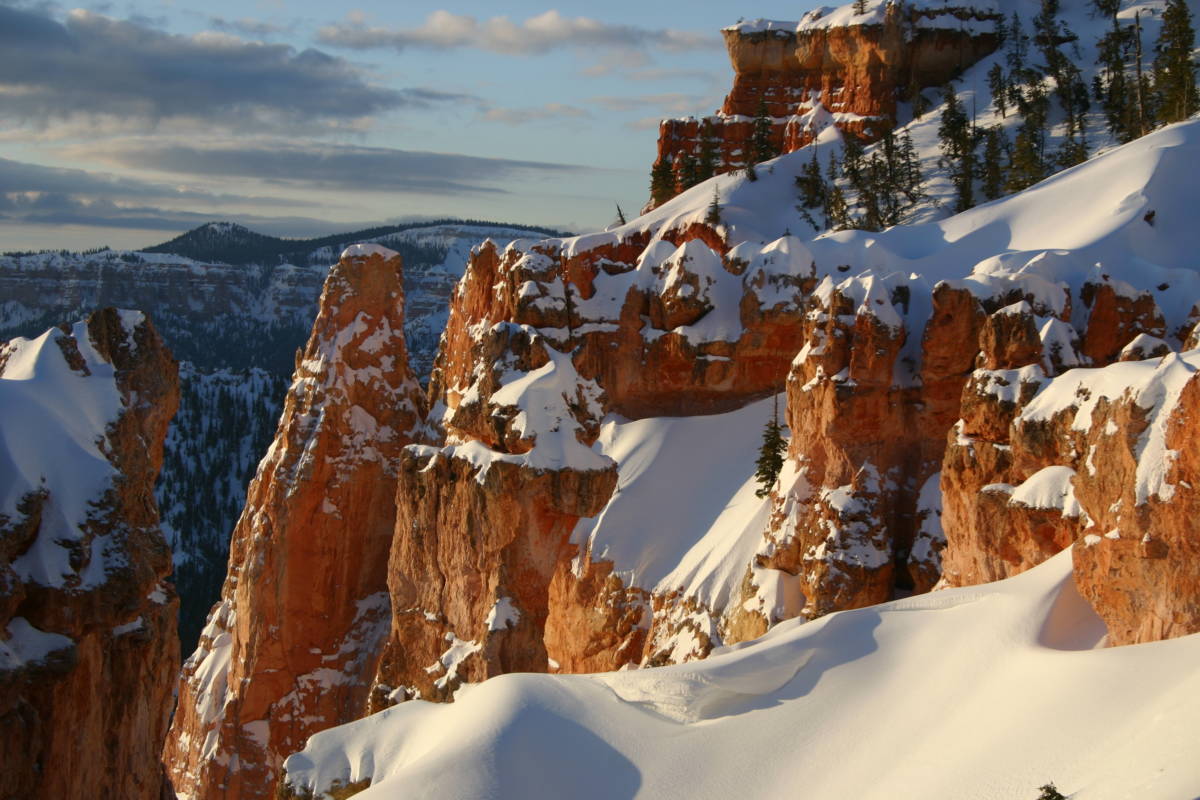
Winter shot of Bryce Canyon
Now: Bryce Canyon is a draw in the wintertime with the white snow juxtaposed against the crimson earth. Visitors can witness firsthand the eroding natural forces that formed the unique hoodoos.
1923 photo depicting an excited group who traveled 268.2 miles from Salt Lake City to Bryce Canyon
Then: This 1923 photo depicts an excited group who traveled 268.2 miles from Salt Lake City to Bryce Canyon. It was normal to have several breakdowns and the roads made for a bumpy travel.
Highway 143 near Bryce Canyon
Now: Today, it’s much easier to travel to Bryce Canyon. Bryce Canyon has many scenic byways that make for exciting road trips. Visitors find out the journey is just as beautiful as the destination. Scenic drives includes Scenic Byway 12 and 143 and Scenic Highway 89. 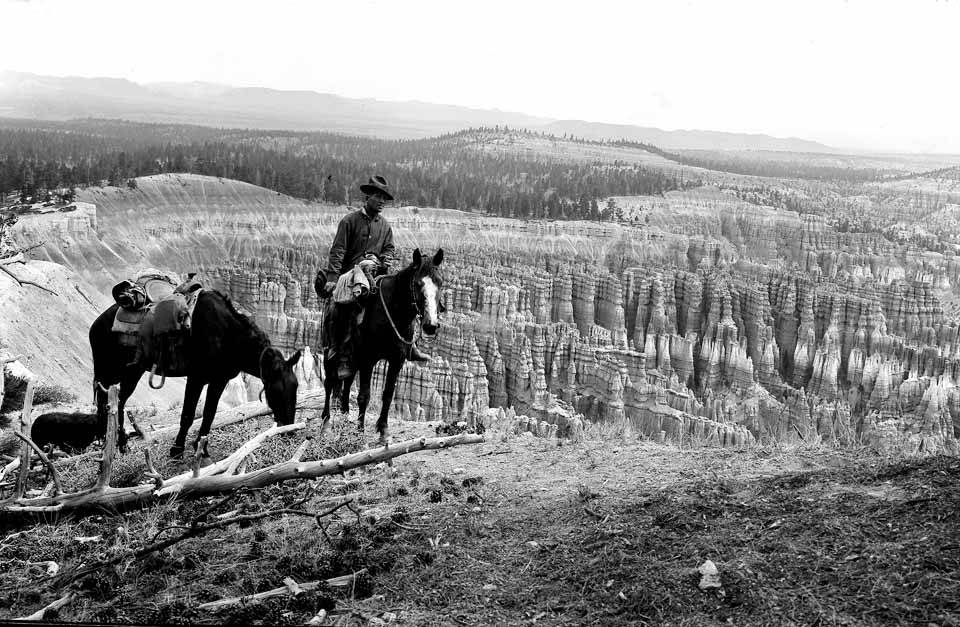
Unidentified rider on Bryce Canyon’s rim
Then: Many visitors preferred riding to walking. Because there were no established trails, all you had to do was find a landmark and head toward it to start your own expedition. 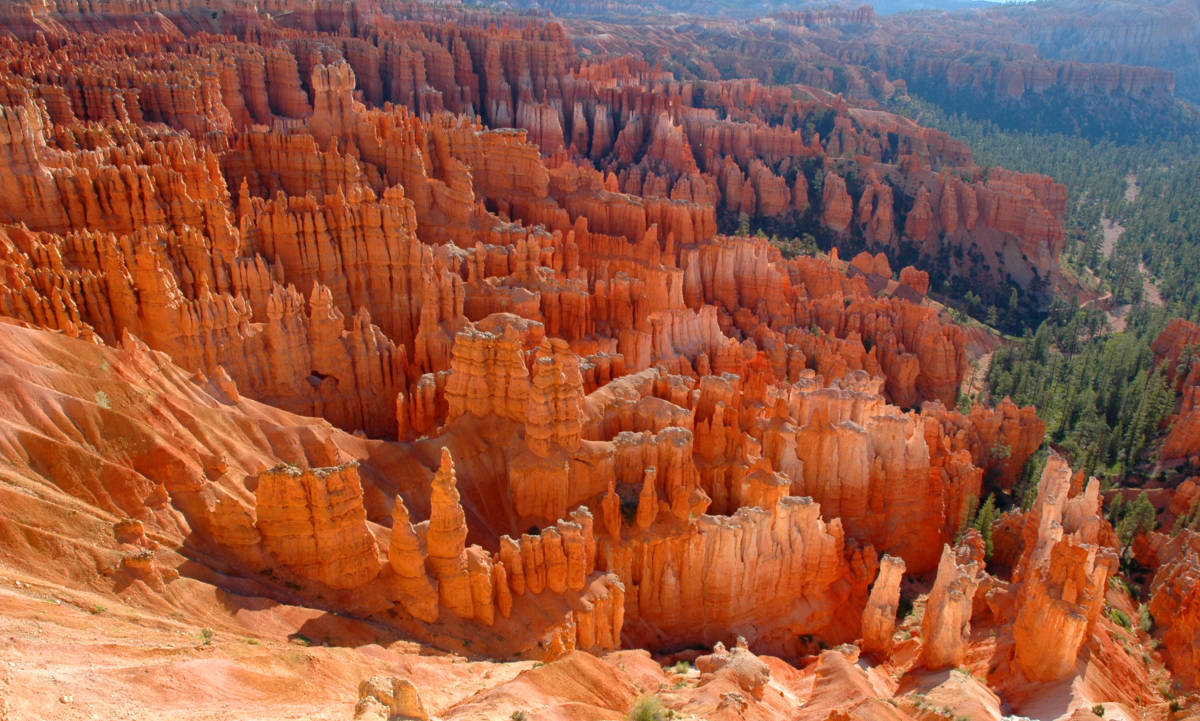
Aerial view of Bryce Canyon’s hoodoos
Now: Today, visitors can take in the breathtaking views by horseback riding, hiking or mountain biking. Most prefer walking to get the closest look at the orange-red rock formations. Articles related to “Bryce Canyon National Park Then and Now: Celebrating 100 Years of History”
Michelin Guide awards Bryce Canyon National Park highest rating
Ruby’s Inn raises over $600,000 for Bryce Canyon Natural History Association
Click This Ad

